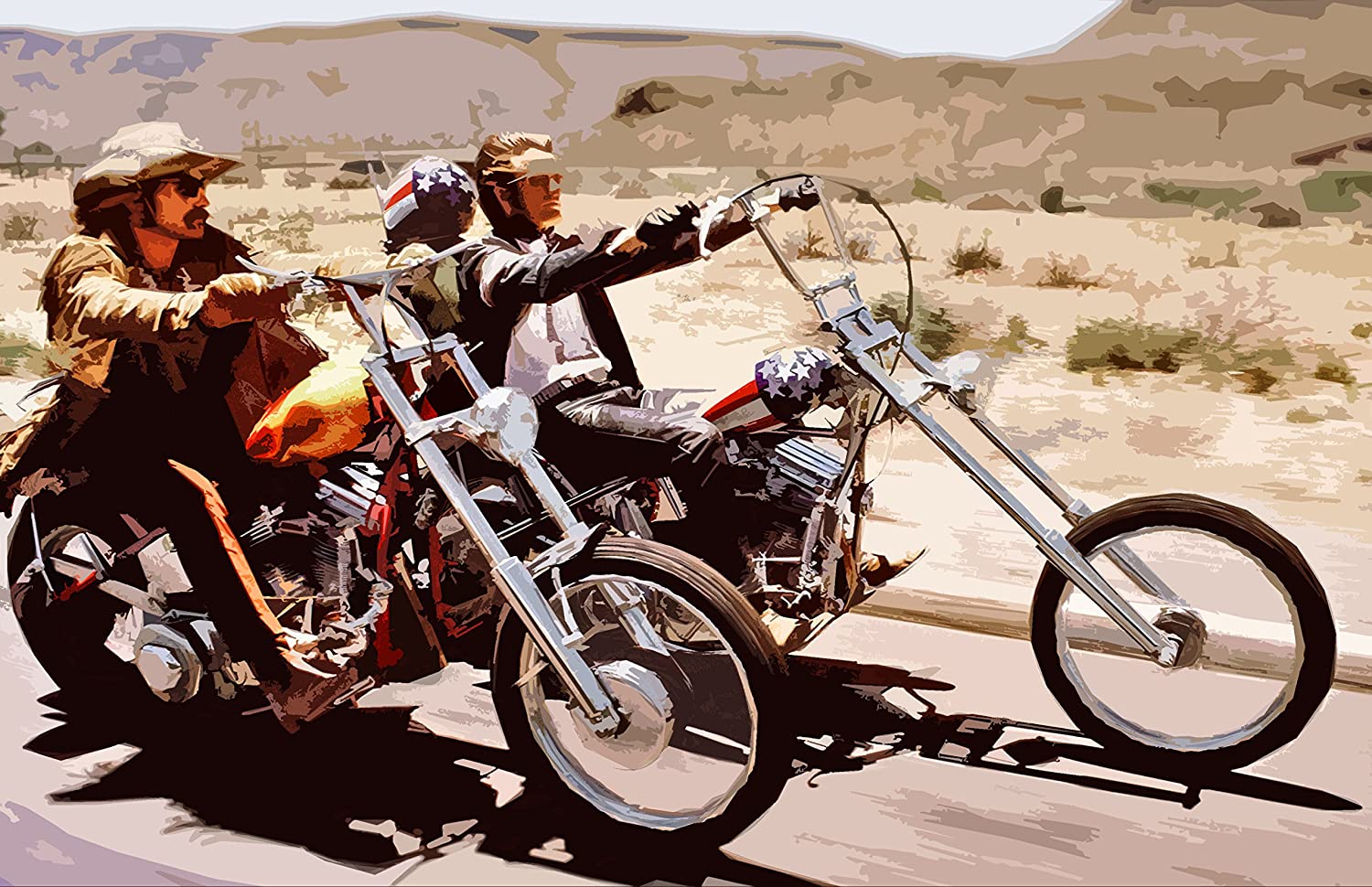A trip to the local theater can transport you back in time to the cultural revolution of the late 1960s. Quentin Tarantino's film, "Once Upon a Time ... in Hollywood," serves as a nostalgic tribute to that era, filled with references to hippies and the counterculture. At the forefront of this cinematic movement was "Easy Rider," a groundbreaking film that not only captured the essence of the time but also transformed the way music was integrated into film soundtracks.
Released in 1969, "Easy Rider" is often hailed as a defining moment for American cinema. The film, which features Peter Fonda and Dennis Hopper as two motorcycle-riding hippies, challenged traditional storytelling and filmmaking techniques. More than just a road movie, it presented a raw and honest depiction of the counterculture, exploring themes of freedom, rebellion, and societal norms.
One of the film's most significant contributions was its innovative use of music. Unlike previous films that relied on orchestral scores, "Easy Rider" opted for a curated soundtrack filled with rock songs that resonated with the youth of the time. This approach not only enhanced the film's narrative but also set a new standard for how music could be used to evoke emotions and tell stories in cinema.
What You Will Learn
- The cultural significance of "Easy Rider" in the context of 1960s America.
- How the film revolutionized the use of music in cinema.
- Key themes and messages conveyed through the film's narrative and soundtrack.
- The legacy of "Easy Rider" and its influence on future filmmakers.
The Cultural Significance of "Easy Rider"
"Easy Rider" emerged as a cultural phenomenon during a time of social upheaval in America. The film's portrayal of two free-spirited bikers exploring the country resonated with a generation seeking authenticity and a break from conventional societal norms. It encapsulated the feelings of discontent and the quest for freedom that defined the counterculture movement.
By showcasing the struggles and adventures of its protagonists, the film highlighted the contrasting values between the counterculture and the mainstream society. The characters, played by Fonda and Hopper, represented a rebellion against the establishment, which appealed to young audiences who felt marginalized and misunderstood. This connection to the youth of the time solidified "Easy Rider" as a landmark film in American cinema.
Innovative Soundtrack: Redefining Film Music
One of the most revolutionary aspects of "Easy Rider" was its soundtrack, which featured songs from iconic artists of the era, such as Steppenwolf, The Byrds, and Jimi Hendrix. Unlike traditional film scores, the use of popular music created a unique audio-visual experience that resonated deeply with audiences. The opening scene, set to Steppenwolf's "Born to Be Wild," perfectly captured the spirit of adventure and freedom that defined the film.
The decision to curate a playlist of rock music was both a creative and economic choice. The filmmakers opted for existing songs instead of hiring a composer and orchestra, which not only saved money but also appealed to the target audience's musical tastes. This approach not only enhanced the film's narrative but also paved the way for future filmmakers to explore similar avenues in their projects.
Thematic Depth: Freedom and Rebellion
At its core, "Easy Rider" is a film about the search for freedom and the exploration of America. The protagonists embark on a journey that is both physical and metaphorical, reflecting the broader societal quest for liberty during the 1960s. As they travel across the country, they encounter various challenges that force them to confront their beliefs and the reality of the world around them.
The film's themes of rebellion and self-discovery resonate strongly with audiences, making it a timeless classic. The juxtaposition of the protagonists' ideals with the harsh realities they face serves as a poignant commentary on the American experience. It invites viewers to reflect on their own values and the societal structures that dictate their lives.
The Legacy of "Easy Rider"
The impact of "Easy Rider" on Hollywood and film music cannot be overstated. It inspired a generation of filmmakers, including Martin Scorsese and Quentin Tarantino, to incorporate popular music into their narratives in innovative ways. This shift in storytelling techniques has continued to influence the film industry, leading to the rise of the "jukebox musical" and the integration of music-driven narratives in films.
Moreover, "Easy Rider" opened the door for independent filmmakers to create stories that challenged the status quo. Its success demonstrated that films could be made outside the traditional studio system, encouraging a wave of independent cinema that flourished in the following decades. This legacy endures today, as new filmmakers draw inspiration from the groundbreaking work of Fonda, Hopper, and their creative team.
Final Thoughts and Reflections
The cultural and cinematic significance of "Easy Rider" endures, as its themes of freedom and rebellion continue to resonate with audiences. The film's innovative soundtrack set a new standard for music in cinema, paving the way for future filmmakers to explore the emotional depth that music can bring to storytelling. As we reflect on this iconic film, it serves as a reminder of the power of cinema to challenge societal norms and inspire change.
In summary, "Easy Rider" is not just a film; it is a cultural touchstone that encapsulates the spirit of a generation. Its legacy lives on in the hearts of those who seek freedom and authenticity in their lives, as well as in the films that continue to push boundaries and explore new artistic avenues. Whether through its narrative, soundtrack, or themes, "Easy Rider" has left an indelible mark on the landscape of American cinema.




